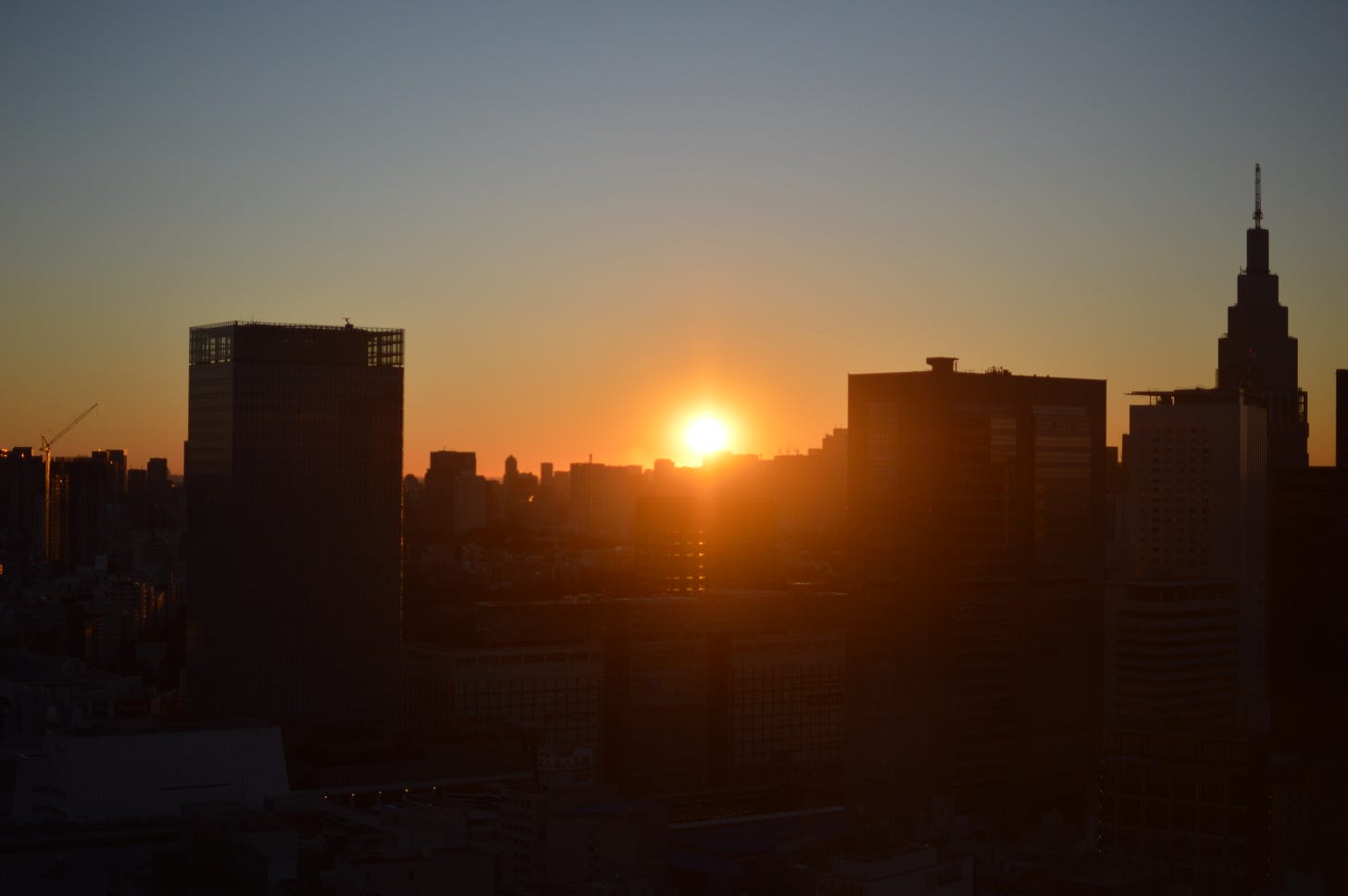There was a celebration in Tokyo this week when, on Thursday, 23 February the Nikkei 225 index broke JPY 39,000 in inter-day trading and then closed at JPY 39,098.68, reaching a new high for the first time in thirty-four years – since the peak of the bubble.
The news was celebrated by politicians and business leaders, who welcomed it as a measure of the strength of Japan Inc. and a vote of confidence in the policies being pursued by the Kishida government. Prime Minister Kishida Fumio, reeling from another blow to his standing with his education minister under fire for ties to the Unification Church, took heart in what he described as investors’ “appreciating the forward progress of the Japanese economy.” Some were careful to note that the stock market is not the real economy, and that there is still work to do. The economy is, after all, in recession. And, as this Nikkei article reminded readers, the bulk of Japanese household wealth is still parked in cash.1
Nikkei 39,000 is clearly more of a symbolic moment than a meaningful indicator in and of itself. But as symbols go, it’s a potent one. The Heisei era is truly over.
It is hardly disputable that if there was a dominant narrative to the Heisei era (1989-2019), it was stagnation. The bubble burst and asset prices plummeted. Deflation set in. Venerable financial institutions went bust. Zombie companies walked the earth. Structural reforms were proposed and discarded. The promise of stable lifetime employment was hollowed out. Politicians and bureaucrats were discredited by corruption scandals. The Liberal Democratic Party was ousted in 1993, ending thirty-eight years of uninterrupted rule, and has depended on coalition partners ever since returning the following year and struggled to find stable leadership for long stretches. To be sure, politics were also viewed as a remedy for the stagnation. Reformers agitated – successfully – for a host of centralizing reforms. Ozawa, Hashimoto, Koizumi, Abe: all believed that political power needed to be marshaled to “break through” – how many political leaders invoked this term? – the challenges that ailed Heisei Japan.
But through it all there was a sense that history was leaving Japan behind. Power was ebbing from a greying, depopulating Japan. China was rising. Even South Korea was surpassing Japan. Abe in particular was animated by the fear that Japan would fall from the ranks of the great powers and be subjected to decisions made elsewhere.
It no longer feels as if Japan is being left behind by history. Abe, particularly by virtue of his lengthy tenure, is part of the story, particularly his conviction that, seemingly by sheer vigor alone, he could convince the Japanese people that their country was still important. But events since the end of his premiership in 2020 are no less important. Abe and Abenomics were still girding Japan for competition in the globalizing economy of the post-cold war world. As Kishida has said repeatedly, the post-cold war era is over.2 The rules of the new era are still being written, but as a well governed, stable democracy with a highly educated and increasingly adaptable workforce, Japan will have a critical role to play in crafting the new order and shaping the flows of money, goods, and people.3
None of this means that Japan is without problems. But unlike during the Heisei era, when Japan seemed alone in its pathologies, the rest of the world seems to be rapidly catching up – and it may now be Japan’s strengths that set it apart. Markets will fluctuate but a new reality is here to stay. Yes, the Heisei era may have given way to the Reiwa era in 2019, but now we can truly say that it is a new era, with a new narrative: Japan still has a part to play in the history of our times.4
Update on subscriptions
Some of you may have noticed that I switched on subscriptions this week. Thank you to those of you who pledged; I am grateful for your support. If you have not subscribed yet, I hope that you will consider doing so. I will be writing a lot more going forward – I will have a longer life update soon – and you won’t want to miss it. I will be keeping all posts open to all subscribers through March 31, after which I will start publishing some posts for subscribers only.
And as an added incentive to subscribe: I will keep subscription prices at $5/month or $50/year through March 31, after which I will be raising them.
Thank you all for your support. I am excited to begin a new era for this newsletter. Stay tuned for more information to come.
I am working my way through the new book by Richard Katz that thoroughly explores how much Japan has changed – and how much is still to be done. More on this soon.
See, for example, his policy speech last autumn: https://kishida.gr.jp/activity/8591.
A democracy not without problems, as I’ve documented, but also without many of the pathologies plaguing its peers in the G7.
Maybe another symbol from this week is that even as domestic politics have critically weakened US support for Ukraine, Japan hosted a well-regarded conference for Ukraine’s reconstruction in Tokyo.





Yes, we have entered a new stage, the era of Reiwa, not to be confused with the Real Estate Institute of West Australia.
Well done Mr. Harris! I believe your message that Japan is far from a setting sun! Keep up the good work.